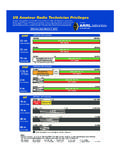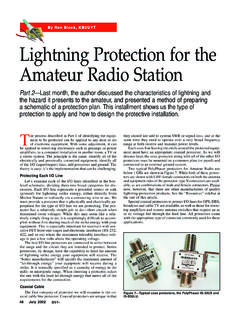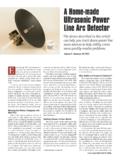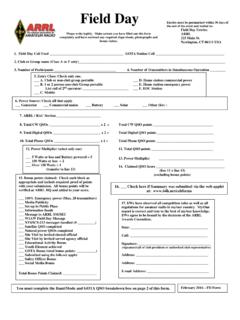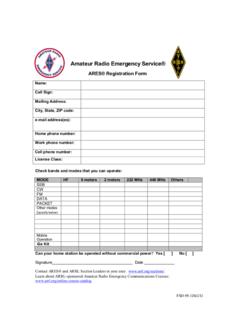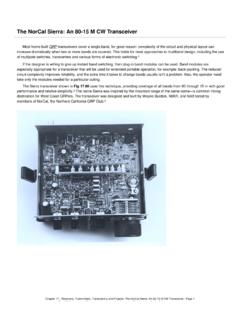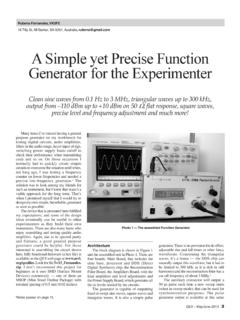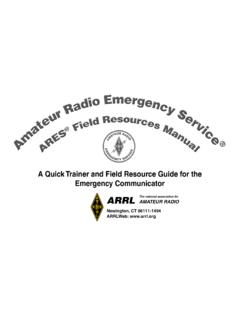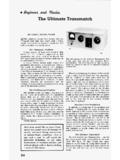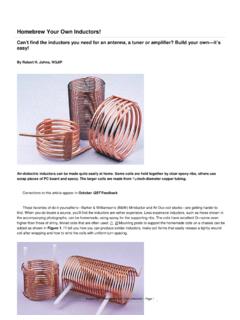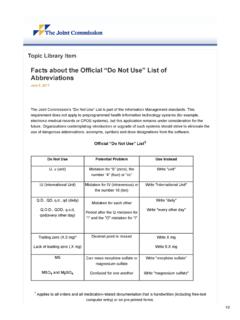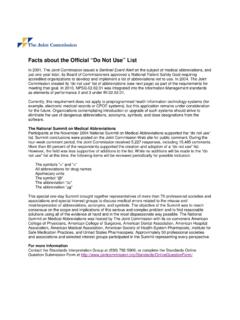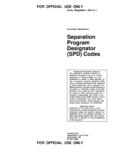Transcription of FSD-218 Relief Emergency · Routine Messages …
1 Relief Emergency Routine Messages FSD-218 Recommended Precedences Every formal radiogram message originated and handled should contain the following component parts in the order given I. Preamble a. Number (begin with 1 each month or year). b. Precedence (R, W, P or Emergency ). c. Handling Instructions (optional, see text). d. Station of Origin (first amateur handler). e. Check (number of words/groups in text only). f. Place of Origin (not necessarily location of station of origin.). g. Time Filed (optional with originating station). h. Date (must agree with date of time filed). II. Address (as complete as possible, include zip code and telephone number). III. Text (limit to 25 words or less, if possible). IV. Signature CW: The prosign separates the parts of the address. separates the address from the text and the text from the signature. marks end of message; this is followed by B if there is another message to follow, by N if this is the only or last message. It is customary to copy the preamble, parts of the address, text and signature on separate lines.
2 RTTY: Same as CW procedure above, except (1) use extra space between parts of address, instead of ; (2) omit cw procedure sign to separate text from address and signature, using line spaces instead; (3) add a CFM line under the signature, consisting of all names, numerals and unusual works in the message in the order transmitted. PACKET/AMTOR BBS: Same format as shown in the cw message example above, except that the and prosigns may be omitted. Most amtor and packet BBS software in use today allows formal message traffic to be sent with the ST command. Always avoid the use of spectrum-wasting multiple line feeds and indentations. PHONE: Use prowords instead of prosigns, but it is not necessary to name each part of the message as you send it. For example, the above message would be sent on phone as follows: Number one Routine HX. Golf W1AW eight Newington Connecticut one eight three zero zulu july one Donald Smith Figures one six four East Sixth Avenue North River City Missouri zero zero seven eight nine Telephone seven three three four nine six eight Break Happy birthday X-ray see you soon X-ray love Break Diana End of Message Over.
3 End of Message is followed by More if there is another message to follow, No More . if it is the only or last message. Speak clearly using VOX (or pause frequently on push-to-talk) so that the receiving station can get fills. Spell phonetically all difficult or unusual words-- do not spell out common words. do not use cw abbreviations or Q-signals in phone traffic handling. Precedences The precedence will follow the message number. For example, on cw 207R or 207 Emergency . On phone, Two Zero Seven, Routine (or Emergency ).. FSD-218 (1/04). Emergency --Any message having life and death urgency to any person or group of persons, which is transmitted by Amateur Radio in the absence of regular commercial facilities. This includes official Messages of welfare agencies during emergencies requesting supplies, materials or instructions vital to Relief of stricken populance in Emergency areas. During normal times, it will be very rare. On cw, RTTY. and other digital modes this designation will always be spelled out.
4 When in doubt, do not use it. PRIORITY--Important messags having a specific time limit. Official Messages not covered in the Emergency category. Press dispatches and other Emergency -related traffic not of the utmost urgency. Notifications of death or injury in a disaster area, personal or official. Use the abbreviation P on cw. WELFARE--A message that is either a) an inquiry as to the health and welfare of an individual in the disaster area b) an advisory or reply from the disaster area that indicates all is well should carry this precedence, which is abbreviated W on cw. These Messages are handled after Emergency and Priority traffic but before Routine . Routine --Most traffic normal times will bear this designation. In disaster situations, traffic labeled Routine (R on cw) should be handled last, or not at all when circuits are busy with Emergency , Priority or Welfare traffic. Handling Instructions (Optional). HXA--(Followed by number) Collect landline delivery authorized by addressee (If no number, authorization is unlimited.
5 HXB--(Followed by number) Cancel message if not delivered of filing time; service originating station. HXC--Report date and time of delivery (TOD) to originating station. HXD--Report to originating station the identity of station from which received, plus date and time. Report identity of station to which relayed, plus date and time, or if delivered report date, time and method of delivery. HXE--Delivering station get reply from addresses, originate message back. HXF--(Followed by number) Hold delivery (date). HXG--Delivery by mail or landline toll call not required. If toll or other expense involved, cancel message and service originating station. For further information on traffic handling, consult the Public Service Communications Manual or the ARRL Operating Manual, both published by ARRL. ARRL QN Signals For CW Net Use QNA* Answer in prearranged order. QNB* Act as relay Between _____ and _____. QNC All net stations Copy. I have a message for all net stations. QND* Net is Directed (controlled by net control station).
6 QNE* Entire net stand by. QNF Net is Free (not controlled). QNG Take over as net control station. QNH Your net frequency is High. QNI Net stations report In.*. I am reporting into the net. (Follow with a list or traffic or QRU). QNJ Can you copy me? Can you copy _____? QNK* Transmit message for _____ to _____. QNL Your net frequency is Low. QNM* You are QRMing the net. Stand by. QNN Net control station is _____. What station has net control? QNO Station is leaving the net. FSD-218 (1/04). QNP Unable to copy you. Unable to copy _____. QNQ* Move frequency to _____ and wait for _____ to finish handling traffic. Then send him traffic for _____. QNR Answer _____ and Receive traffic. QNS* Following Stations are in the net. *(Follow with list.). Request list of stations in the net. QNT I request permission to leave the net for _____ minutes. QNU* The net has traffic for you. Stand by. QNV* Establish contact with _____ on this frequency. If successful, move to _____ and send him traffic for _____.
7 QNW How do I route Messages for _____? QNX You are excused from the net.* Request to be excused from the net. QNY* Shift to another frequency (or to _____ kHz) to clear traffic with _____. QNZ Zero beat your signal with mine. * For use only by the Net Control Station. Notes on Use of QN Signals The QN signals listed above are special ARRL signals for use in amateur cw nets only. They are not for use in casual amateur conversation. Other meanings that may be used in other services do not apply. do not use QN signals on phone nets. Say it with words. QN signals need not be followed by a question mark, even though the meaning may be interrogatory. International Q Signals A Q signal followed by a ? asks a question. A Q signal without the ? answers the question affirmatively, unless otherwise indicated. QRA What is the name of your station? QRG What's my exact frequency? QRH Does my frequency vary? QRI How is my tone? (1-3). QRK What is my signal intelligibility? (1-5). QRL Are you busy? QRM Is my transmission being interfered with?
8 QRN Are you troubled by static? QRO Shall I increase transmitter power? QRP Shall I decrease transmitter power? QRQ Shall I send faster? QRS Shall I send slower? QRT Shall I stop sending? QRU Have you anything for me? (Answer in negative). QRV Are you ready? QRW Shall I tell _____ you're calling him? QRX When will you call again? QRZ Who is calling me? QSA What is my signal strength? (1-5). QSB Are my signals fading? QSD Is my keying defective? QSG Shall I send _____ Messages at a time? QSK Can you work breakin? QSL Can you acknowledge receipt? QSM Shall I repeat the last message sent? FSD-218 (1/04). QSO Can you communicate with _____ direct? QSP Will you relay to _____? QSV Shall I send a series of V's? QSW Will you transmit on _____? QSX Will you listen for _____ on _____? QSY Shall I change frequency? QSZ Shall I send each word/group more than once? (Answer, send twice or _____). QTA Shall I cancel number _____? QTB Do you agree with my word count? (Answer negative). QTC How many Messages have you to send?
9 QTH What is your location? QTR What isyour time? QTV Shall I stand guard for you _____? QTX Will you keep your station open for further communication with me? QUA Have you news of _____? Abbreviations, Prosigns, Prowords CW PHONE (meaning or purpose). (Separation between parts of address or signature.). AA All after (use to get fills). AB All before (used to get fills). ADEE Addressee (name of person to whom message addressed). ADR Address (second part of message). AR End of message (end of record copy). ARL (Used with "check," indicates use of ARRL numbered message in text). Stand by; wait. B More (another message to follow). BK Break; break me; break-in (interrupt transmission on cw. Quick check on phone). Separation (break) between address and text; between text and signature. C Correct; yes. CFM Confirm. (Check me on this). CK Check. DE From; this is (preceding identification). (Error in sending. Transmission continues with last word correctly sent.). HX (Handling instructions. Optional part of preamble.)
10 Initial(s). Single letter(s) to follow. Repeat; I say again. (Difficult or unusual words or groups.). K Go ahead; over; reply expected. (Invitation to transmit .). N Negative, incorrect; no more. (No more Messages to follow.). NR Number. (Message follows.). PBL Preamble (first part of message). N/A Read back. (Repeat as received.). R Roger; point. (Received; decimal point.). SIG Signed; signature (last part of message.). Out; clear (end of communications, no reply expected.). TU Thank you. WA Word after (used to get fills.). WB Word before (used to get fills.). N/A Speak slower. N/A Speak faster. FSD-218 (1/04).
